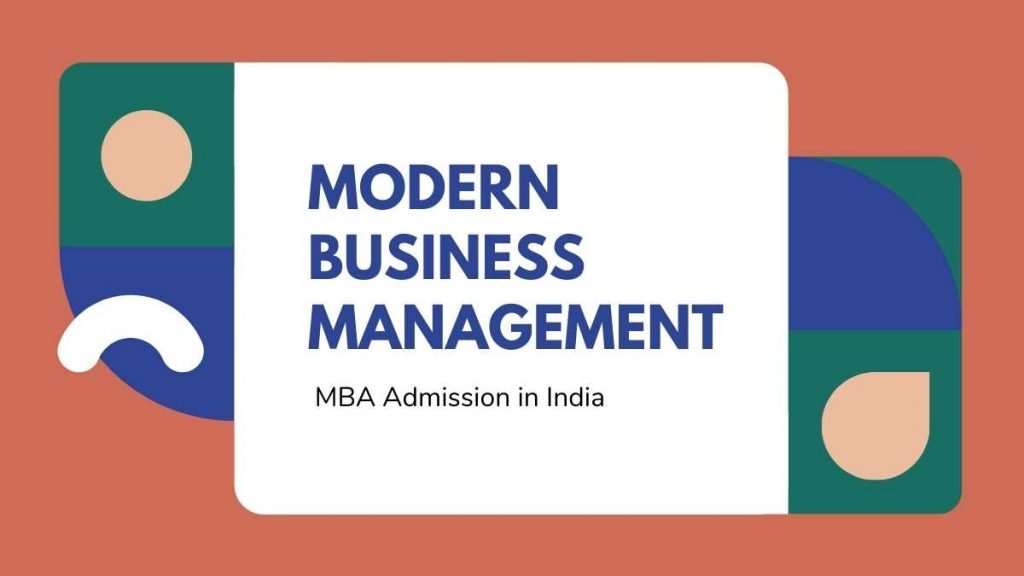Do you want to pursue MBA in Human Resource Management?
Management of people in work organizations is one of the most crucial aspects of business administration.
Successful corporate leaders recognize that employees are the main reason for competitive advantage in business.
Human Resource Management is the management of people at work organizations.
People have different abilities, attitudes, & talents.
Effective management of people can help organizations achieve their objectives.
MBA in HR Management is two years full-time program that imparts knowledge and training in people management.
Here in this article, you are going to learn about:
What is Human Resource Management?
Why Study MBA in HR Management?
Important subjects under HR Management
Career Options for HR Managers
Let’s have a brief outlook on the human resource management course!
What is Human Resource Management?

Human resource activities aim to increase organizational performance.
An HR Manager integrates Human resource activities into business strategies to improve organizational performance.
HRM activities include organization development, human resource planning, talent management, knowledge management, recruitment and selection, learning and development, reward management, employee relations, and health and safety.
Strategic HRM emphasizes business process reengineering, such as organizational and job redesign.
Training and employee development are essential components of strategic HR Management.
The overall purpose of HR Management is to ensure that the organization can achieve success through people.
Human capital consists of the people who work in an organization.
The combined intelligence, skills, and expertise gives the organization its distinctive character.
Human capitals are the primary asset of an organization.
Businesses need to invest in human capital to ensure their survival and growth.
Why Study MBA in Human Resource Management?
An MBA program encompasses specialization in human resource management, operations management, marketing management, and financial management.
MBA in Human Resource Management offers specialized knowledge in staffing, reward management, employee development, and employee relations.
Staffing aims to hire people with appropriate skills, abilities, knowledge, and experience to fill a job.
Rewards Management is the design of systems for performance appraisal and employee benefits.
Employee development includes analyzing training requirements to ensure employees possess the knowledge and skills to perform satisfactory jobs.
Employee relations is the administration of workplace safety and compliance with employment standards.
The labor market includes white-collar and blue-collar jobs.
White collar workers are skilled laborers who earn a higher average salary.
Blue-collar workers perform manual labor in various menial jobs.
Soft and hard versions are two different HR strategies.
Hard HRM emphasizes integrating human resources with business strategy in a rational way to exploit for maximum return.
Soft HRM sees employees as valued assets and a source of competitive advantage.
HR Strategies cater effectively concerning employment, the development of people, and the relationship between management and the workforce.
Human resource management processes are concerned with the development of HR strategies, policies, and practices that affect all aspects of employment management.
Strategic HRM is an approach to decision-making concerning employment relationships, resourcing, learning and development, performance management, rewards, and employee relations.
Important subjects under HR Management
HR Management syllabus includes a detailed study of organizational behavior, organization design and development, people resourcing, performance management, human resource development, rewarding people, employee relations, health safety, and welfare.
Organizational Behaviour
People perform their roles within complex systems called organizations
The study of organizational behavior is concerned with how people within organizations act individually or in groups.
Motivating other people is about getting them to move in the direction you want them to go to achieve a result.
Motivation through incentives and rewards encourages people to apply their efforts and abilities to achieve organizational goals.
People are motivated when they expect that a course of action is likely to lead to the attainment of a goal and a valued reward.
Performance-related pay as a means of providing motivation is common in organizations.
Organizational commitment refers to attachment, loyalty, and individual involvement.
Increased commitment to the organization can produce a higher level of job engagement.
Leadership is the ability to persuade others willingly to behave differently.
The function of a team leader is to achieve a task with the help of a group.
Organizational Design and Development
Organizational development includes approaches such as total quality management, continuous improvements, business process re-engineering, and performance management that tend to improve overall organization effectiveness.
Job design is the process of combining tasks and responsibilities to form jobs.
Job design is the basis for various HRM functions such as selection, training, and rewards distribution.
The main approaches to job design are:
Job rotation: movement of employees from one task to another to reduce monotony by increasing variety.
Job enlargement: combining fragmented tasks into one job.
Job enrichment: maximize the interest and challenges of work.
People Resourcing
Human resource planning is the application of techniques to forecast the demand and supply of manpower for an organization.
People resourcing is concerned with recruitment, selection, downsizing, redundancy, & employee retention.
Talent management involves activities to ensure that an organization attracts, retains, motivates, and develops talented people.
The aim of the recruitment and selection process should be to obtain at minimum cost the number & quality of employees required to satisfy the human resource need of the company.
Selection tests are used to provide more value and reliable evidence of the levels of intelligence, personality characteristics, abilities, and aptitudes of the applicant.
An organization uses newspaper and internet ads to recruit candidates for various jobs.
A job description is usually derived from job analysis and describes the tasks and responsibilities that make up a job.
An interview may vary from structured-type questions and responses to unstructured type allowing complete spontaneity by the applicant and little control by the interviewer.
Performance Management
To establish a high-performance culture in which individuals and teams take responsibility for the improvement of business processes.
Performance management is an important part of the reward management system through the provision of feedback and recognization associated with performance-related pay.
Managing performance is about coaching, guiding, motivating, and rewarding colleagues to help unleash potential and improve organizational performance.
Human Resource Development
Training attempts to bring employees up to the desired standard of competence.
It is concerned with learning & training to improve individual, team, and organizational performance.
Knowledge management is the process of creating, acquiring, capturing, sharing, and using knowledge to enhance learning & performance in an organization.
E-learning is the delivery of learning opportunities & support via computer and web-based technologies.
Training is the use of systematic and planned instructional activities to promote learning.
Training programs can be courses on manual skills, IT skills, supervisory training, interpersonal skills, personal skills, organizational procedures, or practices.
Training techniques include lectures, instructions, discussion, case studies, role-playing, simulation, and group exercise.
Rewarding People
Appraisal systems are designed to measure the performance of an employee.
Performance appraisal data can determine employee rewards.
Assessment is the process by which data are collected and received about the employee’s past and current behavior and performance.
The benefits of performance review involve:
Assess training and development needs
Review past performance
Set performance objectivies
Increase in salary and promotability
Pay and rewards are central to the regulation of employment relationships.
Rewards refer to all forms of financial returns and benefits employees recieve as a part of an employment relationship.
Employee benefits are elements of remuneration given in addition to various forms of cash payments such as annual holidays, pension schemes, insurance, financial assistance, company car, credit card facilities, telephone cost, etc.
Objectives of reward management are:
Attract and retain suitable employees
Maintain or improve the level of employee performance
Comply with employment regulations
Job evaluation is a systematic process for defining the relative worth of jobs within an organization.
It provides the basis for designing a pay structure.
Employee Relations
Employee relations consist of all areas of HR management that involve a relationship with employees or trade unions.
It deals with terms and conditions of employment such as collective bargaining, handling disputes, and regulating employment.
Employee relations serve to protect the interest of both employees and their employers and regulate the ways employers treat their employees and how later is expected to behave at work.
Job regulation aims to provide a framework of minimum rights and rules.
Internal regulation is concerned with procedures for dealing with grievances, redundancies, or disciplinary problems.
External regulation is concerned with employment legislation, rules of trade unions, and employers association.
The role of trade unions as bargaining agents has been perceived to offset the inequalities of individual bargaining power between employers and employees in the labor market.
The fundamental purpose of trade unions is to promote and protect the interest of their members.
Trade unions provide workers a collective voice to make their wishes were known to the management in terms of employment, working hours, holidays, etc.
Workplace Health & Saftey
Work can lead to stress that is harmful to employees’ health.
Causes of stress include:
Occupational stress occurs due to work.
Overload and unrealistic time deadlines put employees under pressure.
Job stress cannot be separated from personal life.
A variety of work-related factors can lead to stress including role ambiguity, frustration, conflict, and harassment.
Other causes of health issues at work includes sick-building syndrome, alcohol & smoking-related illness.
Sick building syndrome is caused due to inadequate ventilation, unsuitable lightning, and airborne pollutants.
Symptoms of the sick-building syndrome include eyes, nose & throat irritation, skin rashes, mental fatigue, headaches, nausea, dizziness, etc.
The smoking-related illness causes absenteeism from work.
Excessive consumption of alcohol causes health issues and job performance problems.
Employers are advised to have a policy statement regarding alcohol abuse agreed upon with employees.

Career Options for HR Managers
HR managers have excellent career opportunities with an average minimum salary of up to 5 to 7 lakh INR.
Job roles for graduates in work organizations include:
HR Manager
Assistant HR Manager
Executive HR
Senior HR Recruiter
Global HR Coordinator
HR Payroll Executive
Top HR Consulting firms for career opportunities after MBA in Human Resource Management are:
Deloitte
McKinsey & Company
Accenture
Bain & Company
Boston Consulting Group
PwC advisory services
Aon Hewitt
FAQs about MBA in Human Resource Management
A) Completed graduation through a classroom-based program with a minimum of 50% marks, and appeared in any of the MBA entrance tests such as CAT, MAT, CMAT, or XAT.
A) Indian Institute of Management, Xavier School of Management, International Management Institute, Symbiosis Institute of Business Management, Xavier Institute of Management & Entrepreneurship, T.A. Pai Management Institute, Wellngkar Institute of Management Development, Narsee Monjee Institute of Management Studies.
A) HR Managers earn a good salary for an average minimum package starting from 3.5 to 5 lakh and a maximum of up to 12 to 15 lakh INR.
A) MBA program fee starts from 3 to 5 lakh INR in tier 2 business schools and goes up to 7 to 15 lakh for two years of a full-time classroom-based PGDM or MBA program.
A) Effective management of people in an organization through leadership, motivation, rewards, and incentives are the primary job responsibilities of human resource managers.

Conclusion
Master in business administration is among the most rewarding courses offered by business schools in India.
MBA in Human Resource Management offers excellent career opportunities for young graduates in the field of business administration.
The course curriculum teaches leadership skills which is one of the most important traits to effectively manage people in an organization.
The course teaches strategies to motivate employees to align their skills and abilities with the vision and mission of the organization to achieve its objectives.
Designing job roles for various tasks in an organization and selecting suitable candidates to perform those jobs are the primary responsibility of HR managers.
Preparing policies and procedures for reward management, and pay scale design based on employee performance is the responsibility of HR managers in an organization.
Maintaining a healthy work environment and managing employment relationships between employees and employers are the duties of HR managers.
We hope this article provides valuable information about MBA in human resource management.
For more information, kindly comment below to ask your queries!






Thanks for sharing! It is useful information.
Very informative post, I learned a lot from reading it.